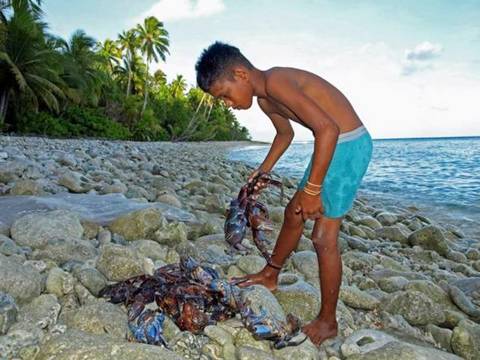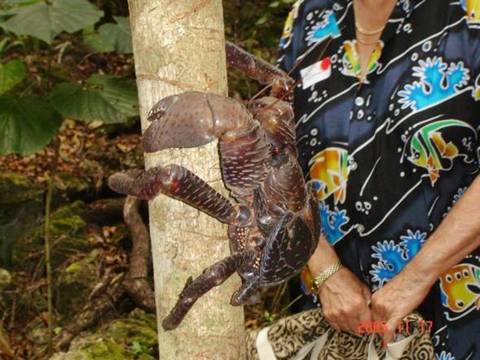The coconut crab, Birgus latro, is the largest land-living arthropod in the world, and is probably at the upper limit of how big terrestrial animals with exoskeletons can become in today’s atmosphere. The species inhabits the coastal forest regions of many Indo-Pacific islands, although localized extinction has occurred where the crab is sympatric with man. Generally nocturnal, they remain hidden during the day and emerge only on some nights to forage. Their body is divided into four regions; the cephalic lobe, forepart, trunk, and opisthosoma. It is a highly apomorphic hermit crab and is known for its ability to crack coconuts with its strong pincers to eat the contents. It is the only species of the genus Birgus. More pix after a jump...
It is also called the robber crab or palm thief, because some coconut crabs are rumored to steal shiny items such as pots and silverware from houses and tents. Another name is terrestrial hermit crab, due to the use of shells by the young animals; however, there are other terrestrial hermit crabs which do not get rid of the shell even as adults. These—typically in the closely related genus Coenobita—are the animals usually called “terrestrial hermit crab”; given the close relationship between Coenobita and Birgus, the term would generally refer to any member of the family Coenobitidae.
The coconut crab also has a range of local names, for example, unga or kaveu in the Cook Islands, and ayuyu in the Marianas where it is sometimes associated with taotaomo’na because of the traditional belief that ancestral spirits can return in the form of animals such as ayuyu.














No comments:
Post a Comment